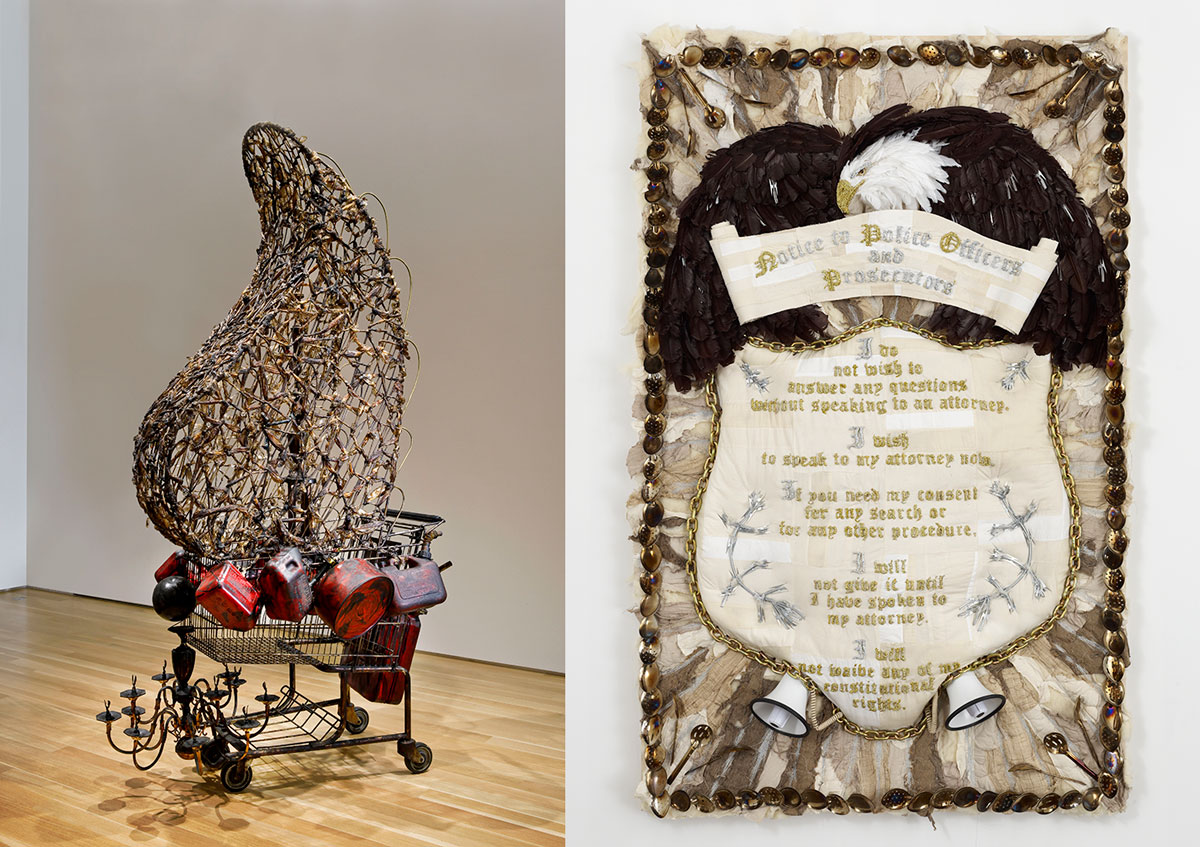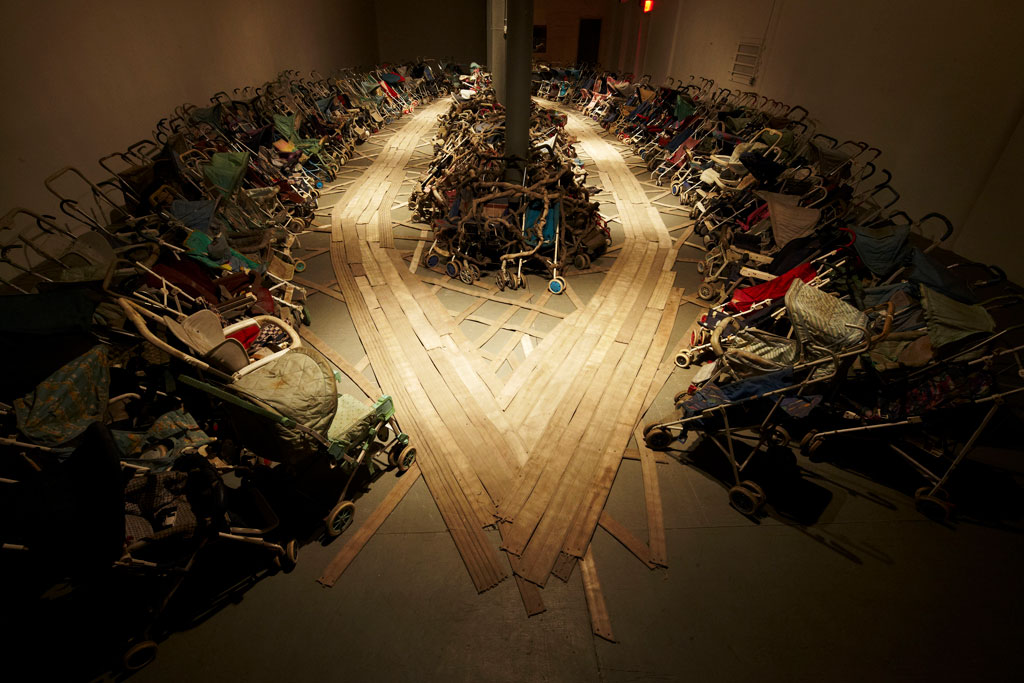ART CITIES:N.York-Nari Ward
 Emerging alongside a notable group of African-American artists who rose to prominence in the ‘90s, Nari Ward’s massive and tactile approach to art-making has expanded contemporary definitions of installation, assemblage, and site-specificity. His deft use of found objects imbues his work with a visceral relationship to history and the real world, allowing him to challenge viewers’ perceptions of familiar objects and experiences.
Emerging alongside a notable group of African-American artists who rose to prominence in the ‘90s, Nari Ward’s massive and tactile approach to art-making has expanded contemporary definitions of installation, assemblage, and site-specificity. His deft use of found objects imbues his work with a visceral relationship to history and the real world, allowing him to challenge viewers’ perceptions of familiar objects and experiences.
By Efi Michalarou
Photo: The New Museum Archive
The exhibition “Nari Ward: We the People” brings together works spanning Nari Ward’s 25-year career, installed across the three main floors of the New Museum The exhibition features 30 sculptures, paintings, videos, and large-scale installations from throughout Ward’s career, highlighting his status as one of the most important and influential sculptors working today. Since the early 1990s, Ward has produced his works by accumulating staggering amounts of humble materials and repurposing them in consistently surprising ways. His approach evokes a variety of folk traditions and creative acts of recycling from Jamaica where he was born, as well as the material textures of Harlem, where he has lived and worked for the past twenty-five years. Yet Ward also relies on research into specific histories and sites to uncover connections among geographically and culturally disparate communities and to explore the tension between tradition and transformation. This presentation highlights the continued importance of New York, and Harlem in particular, to the material and thematic content of Ward’s art. Many of his early sculptures were created with materials scavenged from buildings and streets in Harlem. These items (baby strollers, fire hoses, baseball bats, cooking trays, bottles, and shopping carts) were chosen for their connection to individual lives and stories within the neighborhood. The exhibition includes several key early works, such as the large-scale environments “Amazing Grace” and “Hunger Cradle” (both 1993), which Ward made and exhibited in an abandoned firehouse. That same year, Ward had his first institutional solo exhibition at the New Museum where he exhibited a dramatic, large sculpture “Carpet Angel” (1992). “Amazing Grace” is a large-scale installation comprised of 310 abandoned strollers, arranged in an oval with a central walkway made of flattened fire hoses. Uneven and tough terrain makes navigation slow and deliberate. The objects in this work were all heavily used: first by parents and then by the homeless. While the owner might have been quite different, the goal was the same: the transport of ones possessions either human or physical. “Hunger Cradle” is an immersive installation that operates on a similar scale as “Amazing Grace”. It consists of the debris that Ward had found in and around a firehouse, ranging in size from hand tools to furniture to car parts, which he strung up in a thick, cocoon-like web made from rope, string, and tubing. Viewers could walk into this work, moving through and under it. “Carpet Angel” is a multimedia installation, made from urban waste materials, consists of a carpet runner, carpet remnants, plastic bags, plastic bottles, and furniture springs. These commonplace materials, selected and reconfigured by the artist, evoke the urban environment, its inhabitants, and their histories. Ward allow viewers to make a direct connection to the work through the use of everyday materials which carry distinct references for each viewer. In his more recent work, Ward directly addresses complex political and social realities that resonate on both a local and a national level, reflecting the profound changes gentrification has brought to Harlem and the increasingly fractured state of democracy in the United States. He uses language, architecture, and a variety of sculptural forms to reflect on racism and power, migration and national identity, and the layers of historical memory that comprise our sense of community and belonging.
Info: Curators: Gary Carrion-Murayari Massimiliano Gioni and Helga Christoffersen, The New Museum, 235 Bowery, New York, Duration: 13/2-26/5/19, Days & Hours: Tue-Wed & Fri-Sun 11:00-18:00, Thu 11:00-21:00, www.newmuseum.org






